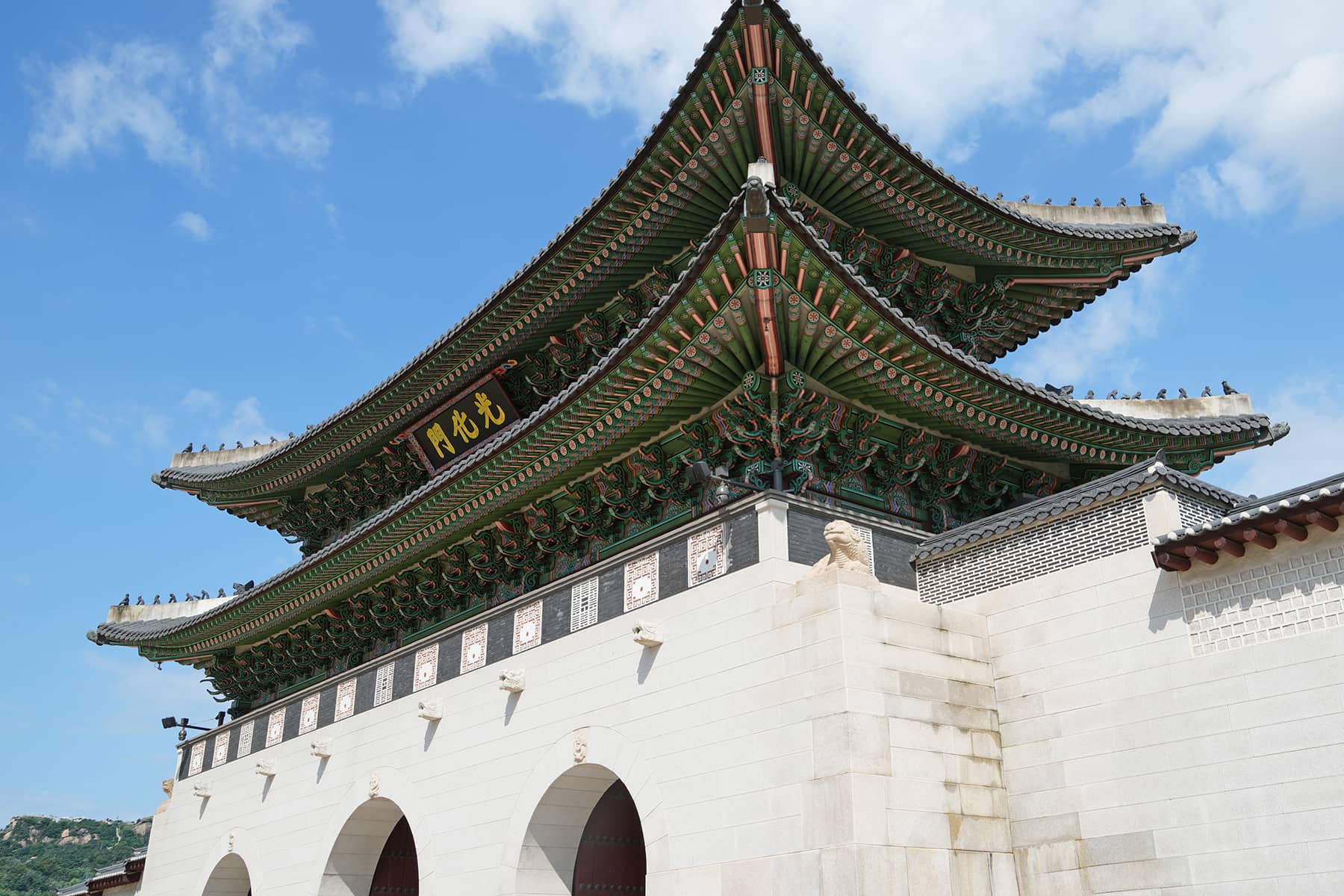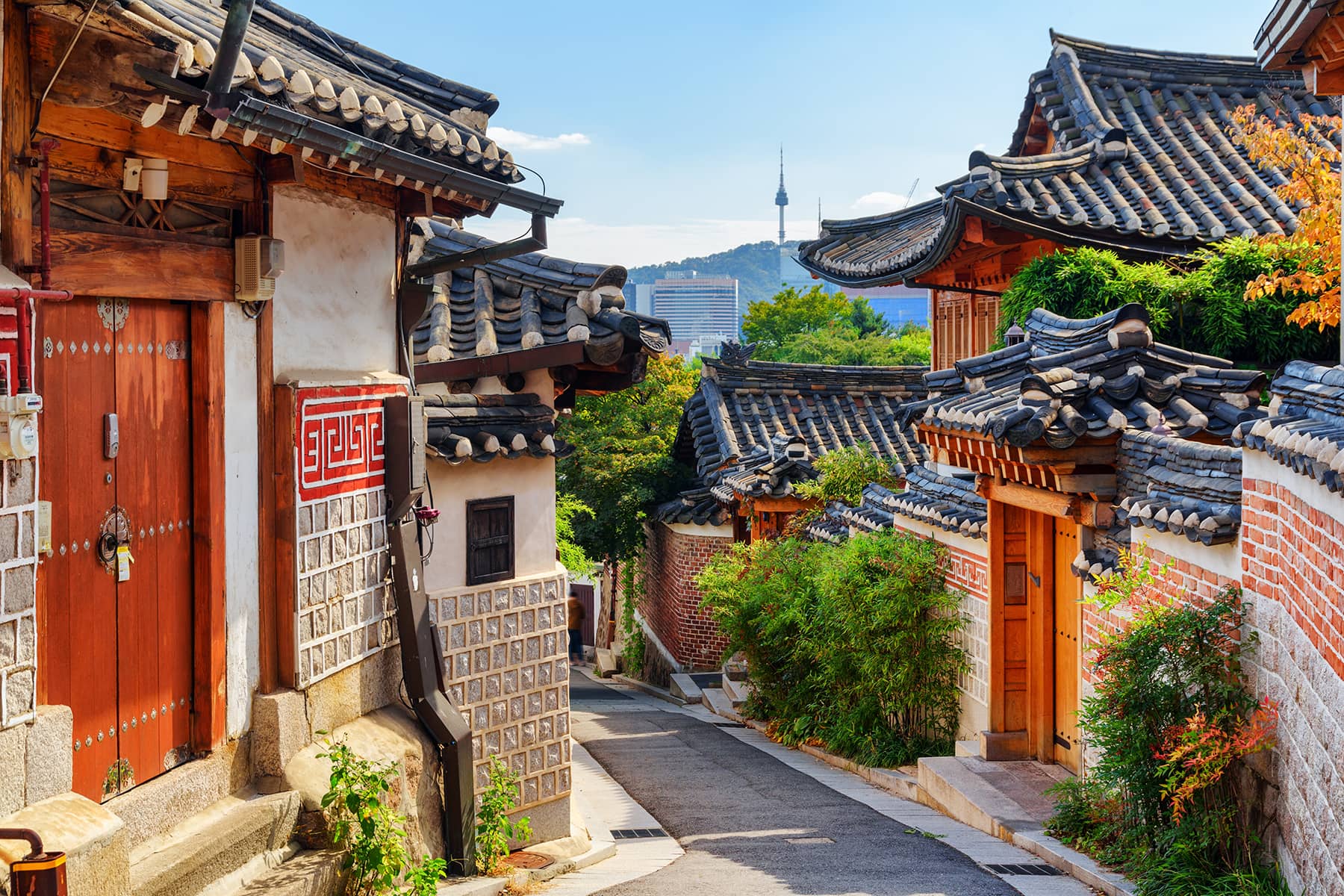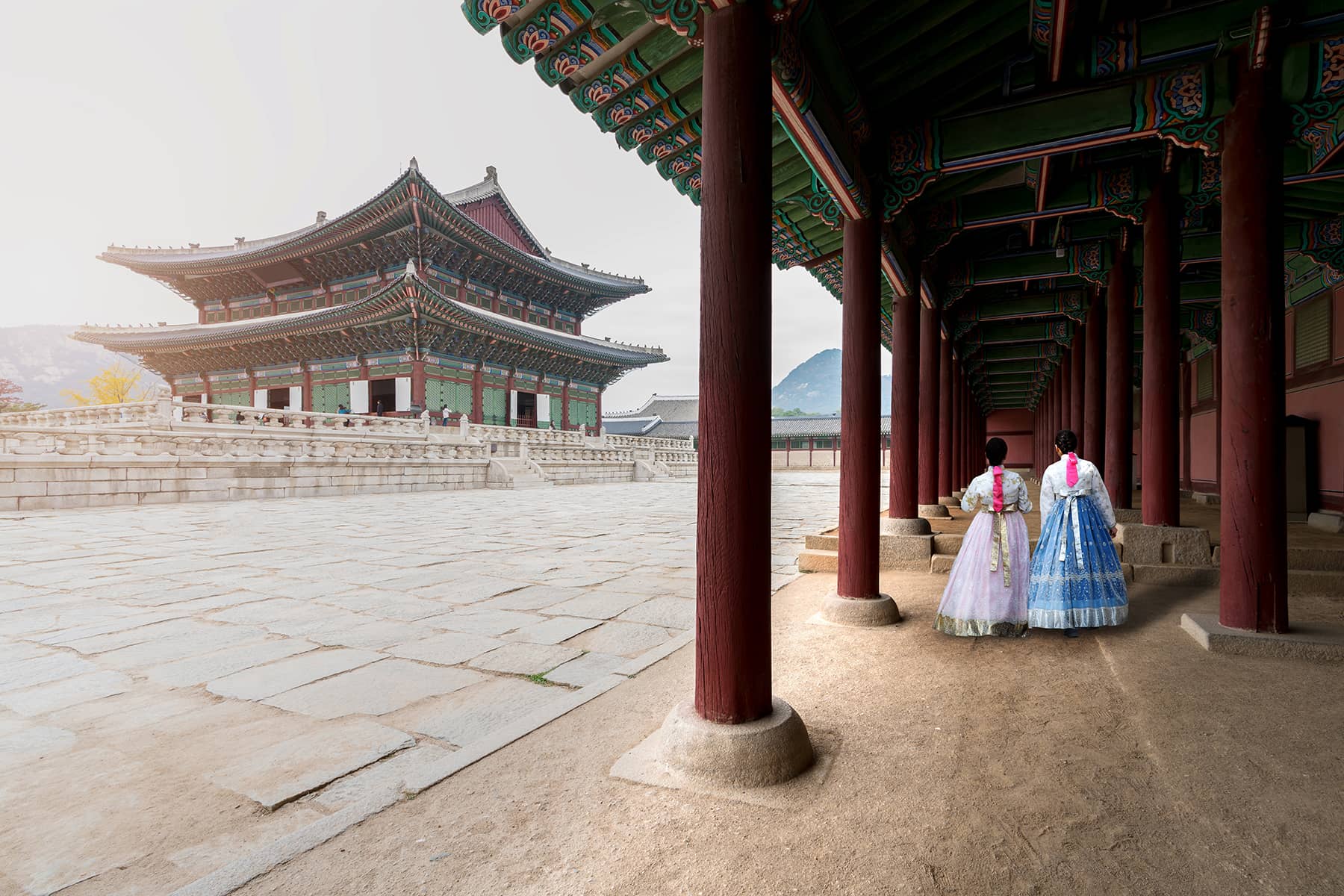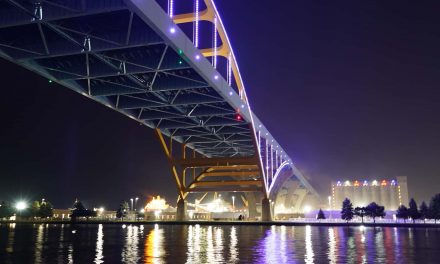
The Korean peninsula boasts a history marked by periods of unification, fragmentation, foreign domination, and eventual division into two distinct states. The English names used to describe this region of Northeast Asia, its people, language, and culture have evolved over centuries, influenced by historical events, geopolitical changes, and cultural shifts.
The earliest known name associated with the Korean Peninsula is “Gojoseon” (고조선), often referred to simply as “Joseon” in historical contexts. Gojoseon, established around 2333 BCE according to Korean mythology, is considered the first Korean kingdom.
The term “Joseon” itself is derived from ancient Chinese characters meaning “morning” (朝) and “fresh” (鮮), often interpreted as “Land of the Morning Calm.” This poetic epithet has endured in various forms and contexts throughout Korea’s history.
During the era of the Three Kingdoms (57 BCE to 668 CE), Korea was divided into three major kingdoms: Goguryeo (고구려), Baekje (백제), and Silla (신라). Each kingdom not only had its own unique cultural and political identity but also contributed to the diverse historical tapestry of the region.
The name “Goguryeo” is particularly notable, as it is the root of the modern name “Korea.” “Goguryeo” was known in various sources as “Koguryo,” reflecting the kingdom’s power and influence over northern Korea and parts of northeastern China.
Following the fall of Baekje and Goguryeo, the Silla kingdom unified most of the Korean Peninsula, creating the Unified Silla period (668–935). During this time, the name “Silla” became synonymous with the Korean state. However, the unification was not entirely complete, as the Balhae kingdom (발해) emerged in the former Goguryeo territories, maintaining a distinct identity until its fall in 926.
The subsequent rise of the Goryeo Dynasty (고려) from 918 to 1392 marked a significant transformation in Korea’s identity. The name “Goryeo” itself is derived from “Goguryeo,” highlighting a desire to inherit and continue the legacy of the ancient kingdom. It was during the Goryeo Dynasty that the name “Korea” began to be recognized internationally.
Its widespread acceptance was facilitated by Goryeo’s extensive diplomatic and trade relationships with neighboring countries and beyond, including the Khitan, Liao, Song, and Yuan dynasties, as well as various Islamic states. The name “Korea” became an exonym used by foreign traders and travelers, who adapted the native pronunciation “Goryeo” to their own phonetic systems.
The fall of the Goryeo Dynasty led to the establishment of the Joseon Dynasty (조선) from 1392 to 1897, one of Korea’s most significant historical periods. The dynasty, named after the ancient kingdom of Gojoseon, sought to reestablish Korea as a center of Confucian scholarship and culture.
The name “Joseon” became synonymous with the Korean state for over five centuries, and it was during this time that many aspects of traditional Korean culture, including the development of the Korean script Hangul flourished.
The term “Joseon” continued to be used in various forms, including “Choson,” “Chosen,” and “Chosun,” depending on the transliteration system employed. The legacy of the Joseon Dynasty is still evident in many aspects of Korean culture, from traditional “hanbok” dress to architectural styles and Confucian rituals.
The early 20th century was a tumultuous time for Korea, marked by the end of the Joseon Dynasty and the annexation of Korea by Japan in 1910. During this period, Korea was referred to as “Chosen” (朝鮮) in Japanese, a direct transliteration of the Korean “Joseon.”
The Japanese occupation lasted until the end of World War II in 1945, a period during which the Korean language and culture were heavily suppressed in favor of Japanization policies. The name “Chosen” became associated with the period of Japanese colonial rule, a time of significant hardship and resistance for the Korean people.
The legacy of this name remains sensitive, as it is tied to the memories of oppression and the loss of sovereignty. During this period, Koreans were often referred to in Japanese records as “Chosenjin” (朝鮮人), a term that still carries historical connotations today.
With the defeat of Japan in World War II, Korea regained its independence but soon faced a new crisis: the division of the peninsula. In 1948, Korea was officially split into two separate states, each with its own government and ideological orientation.
The southern half became the Republic of Korea (대한민국), commonly known as South Korea, while the northern half became the Democratic People’s Republic of Korea (조선민주주의인민공화국), commonly known as North Korea.
The name “Republic of Korea” (ROK) was chosen to represent the democratic government established in the south, aligning with the principles of a republic and sovereignty. The name “South Korea” is used internationally to refer to this country.
Conversely, the “Democratic People’s Republic of Korea” (DPRK) reflects the Communist ideology adopted by the northern regime. The term “North Korea” is used in the global context to distinguish it from South Korea.
Today, the names “North Korea” and “South Korea” are universally recognized and used to denote the two distinct nations occupying the Korean Peninsula. The Korean language, however, continues to serve as a crucial element of national identity in both countries.
In the South, the language is referred to as “Hangul” (한글), named after the unique script invented during the Joseon Dynasty by King Sejong the Great. In the North, it is called “Chosŏn’gŭl” (조선글), reflecting the North’s preference for the historical name “Joseon.”
While the language remains mutually comprehensible, the two Koreas have developed distinct dialects, vocabulary, and even certain linguistic rules. These differences are influenced by the political, social, and economic systems that have evolved separately since the division. Despite these differences, the term “Korean” continues to refer to the shared language, culture, and ethnicity of the people of both Koreas.
The evolution of Korea’s names has profound cultural and political implications. The use of “Korea” in English and other languages symbolizes the shared heritage and history of the peninsula, despite the current division. The terms “North Korean” and “South Korean” are often used to distinguish between the two nations’ citizens and their respective governments, policies, and cultures.
In cultural contexts, the name “Korean” is used as an umbrella term to describe the art, music, literature, and traditions that originate from both the North and the South. However, there are significant cultural differences that have developed over the past seven decades due to the contrasting political systems.
South Korea, with its democratic government and market economy, has seen a flourishing of pop culture, technology, and global influence, particularly through the Korean Wave (Hallyu). North Korea, on the other hand, remains an isolated, authoritarian state, with its cultural production tightly controlled by the government.
The name “Korea” also has implications in international diplomacy and inter-Korean relations. The two Koreas often contest the legitimacy and representation of the name “Korea” in international forums.
For example, in the Olympics and other international sports events, the two nations are represented separately, but efforts for joint participation sometimes bring up discussions about the use of the name “Korea.”
South Korea is commonly known by two prominent names: “Hanguk” and “Daehan Minguk.” The names are not interchangeable, with each representing distinct aspects of the country’s identity and history.
Hanguk (한국) is the term frequently heard in everyday conversation to refer to South Korea. The word “Hanguk” means “Country of Han,” with “Han” evoking the historical Three Kingdoms period, particularly the kingdom of Han. The colloquial usage is prevalent among South Koreans and is often used informally to denote the country in a familiar and approachable manner.
In contrast, Daehan Minguk (대한민국) is the official name of South Korea, translating to “Republic of Korea.” The term “Daehan” recalls the “Great Han Empire” (Daehan Jeguk), which was the name of Korea from 1897 to 1910.
The inclusion of “Minguk,” meaning “Republic,” underscores the nation’s democratic governance. “Daehan Minguk” is utilized in formal and official contexts, including government documents, international relations, and official ceremonies.
In English, the term “Korean” is used to refer to both the language spoken and the people of Korea, encompassing individuals from both North and South Korea. However, the vernacular usage of “Korea” is a direct reference only to South Korea.
The habit is known as a synecdoche, a figure of speech in which a part of something is used to represent the whole. Synecdoche is common for South Korea because of its global prominence, over the North’s isolation and impoverishment.
South Korea is recognized internationally as the successor state of the historic country of “Korea,” before the Japanese occupation. That familiarity is why people use “Korea” as shorthand for the culturally thriving part of the Korean Peninsula.
MI Staff (Korea)
Lее Mаtz
Prasitrodphan, Keitma, Efired, and Shin Sang Eun (via Shutterstock)
- Exploring Korea: Stories from Milwaukee to the DMZ and across a divided peninsula
- A pawn of history: How the Great Power struggle to control Korea set the stage for its civil war
- Names for Korea: The evolution of English words used for its identity from Gojoseon to Daehan Minguk
- SeonJoo So Oh: Living her dream of creating a "folded paper" bridge between Milwaukee and Korean culture
- A Cultural Bridge: Why Milwaukee needs to invest in a Museum that celebrates Korean art and history
- Korean diplomat joins Milwaukee's Korean American community in celebration of 79th Liberation Day
- John T. Chisholm: Standing guard along the volatile Korean DMZ at the end of the Cold War
- Most Dangerous Game: The golf course where U.S. soldiers play surrounded by North Korean snipers
- Triumph and Tragedy: How the 1988 Seoul Olympics became a battleground for Cold War politics
- Dan Odya: The challenges of serving at the Korean Demilitarized Zone during the Vietnam War
- The Korean Demilitarized Zone: A border between peace and war that also cuts across hearts and history
- The Korean DMZ Conflict: A forgotten "Second Chapter" of America's "Forgotten War"
- Dick Cavalco: A life shaped by service but also silence for 65 years about the Korean War
- Overshadowed by conflict: Why the Korean War still struggles for recognition and remembrance
- Wisconsin's Korean War Memorial stands as a timeless tribute to a generation of "forgotten" veterans
- Glenn Dohrmann: The extraordinary journey from an orphaned farm boy to a highly decorated hero
- The fight for Hill 266: Glenn Dohrmann recalls one of the Korean War's most fierce battles
- Frozen in time: Rare photos from a side of the Korean War that most families in Milwaukee never saw
- Jessica Boling: The emotional journey from an American adoption to reclaiming her Korean identity
- A deportation story: When South Korea was forced to confront its adoption industry's history of abuse
- South Korea faces severe population decline amid growing burdens on marriage and parenthood
- Emma Daisy Gertel: Why finding comfort with the "in-between space" as a Korean adoptee is a superpower
- The Soul of Seoul: A photographic look at the dynamic streets and urban layers of a megacity
- The Creation of Hangul: A linguistic masterpiece designed by King Sejong to increase Korean literacy
- Rick Wood: Veteran Milwaukee photojournalist reflects on his rare trip to reclusive North Korea
- Dynastic Rule: Personality cult of Kim Jong Un expands as North Koreans wear his pins to show total loyalty
- South Korea formalizes nuclear deterrent strategy with U.S. as North Korea aims to boost atomic arsenal
- Tea with Jin: A rare conversation with a North Korean defector living a happier life in Seoul
- Journalism and Statecraft: Why it is complicated for foreign press to interview a North Korean defector
- Inside North Korea’s Isolation: A decade of images show rare views of life around Pyongyang
- Karyn Althoff Roelke: How Honor Flights remind Korean War veterans that they are not forgotten
- Letters from North Korea: How Milwaukee County Historical Society preserves stories from war veterans
- A Cold War Secret: Graves discovered of Russian pilots who flew MiG jets for North Korea during Korean War
- Heechang Kang: How a Korean American pastor balances tradition and integration at church
- Faith and Heritage: A Pew Research Center's perspective on Korean American Christians in Milwaukee
- Landmark legal verdict by South Korea's top court opens the door to some rights for same-sex couples
- Kenny Yoo: How the adversities of dyslexia and the war in Afghanistan fueled his success as a photojournalist
- Walking between two worlds: The complex dynamics of code-switching among Korean Americans
- A look back at Kamala Harris in South Korea as U.S. looks ahead to more provocations by North Korea
- Jason S. Yi: Feeling at peace with the duality of being both an American and a Korean in Milwaukee
- The Zainichi experience: Second season of “Pachinko” examines the hardships of ethnic Koreans in Japan
- Shadows of History: South Korea's lingering struggle for justice over "Comfort Women"
- Christopher Michael Doll: An unexpected life in South Korea and its cross-cultural intersections
- Korea in 1895: How UW-Milwaukee's AGSL protects the historic treasures of Kim Jeong-ho and George C. Foulk
- "Ink. Brush. Paper." Exhibit: Korean Sumukhwa art highlights women’s empowerment in Milwaukee
- Christopher Wing: The cultural bonds between Milwaukee and Changwon built by brewing beer
- Halloween Crowd Crush: A solemn remembrance of the Itaewon tragedy after two years of mourning
- Forgotten Victims: How panic and paranoia led to a massacre of refugees at the No Gun Ri Bridge
- Kyoung Ae Cho: How embracing Korean heritage and uniting cultures started with her own name
- Complexities of Identity: When being from North Korea does not mean being North Korean
- A fragile peace: Tensions simmer at DMZ as North Korean soldiers cross into the South multiple times
- Byung-Il Choi: A lifelong dedication to medicine began with the kindness of U.S. soldiers to a child of war
- Restoring Harmony: South Korea's long search to reclaim its identity from Japanese occupation
- Sado gold mine gains UNESCO status after Tokyo pledges to exhibit WWII trauma of Korean laborers
- The Heartbeat of K-Pop: How Tina Melk's passion for Korean music inspired a utopia for others to share
- K-pop Revolution: The Korean cultural phenomenon that captivated a growing audience in Milwaukee
- Artifacts from BTS and LE SSERAFIM featured at Grammy Museum exhibit put K-pop fashion in the spotlight
- Hyunjoo Han: The unconventional path from a Korean village to Milwaukee’s multicultural landscape
- The Battle of Restraint: How nuclear weapons almost redefined warfare on the Korean peninsula
- Rejection of peace: Why North Korea's increasing hostility to the South was inevitable
- WonWoo Chung: Navigating life, faith, and identity between cultures in Milwaukee and Seoul
- Korean Landmarks: A visual tour of heritage sites from the Silla and Joseon Dynasties
- South Korea’s Digital Nomad Visa offers a global gateway for Milwaukee’s young professionals
- Forgotten Gando: Why the autonomous Korean territory within China remains a footnote in history
- A game of maps: How China prepared to steal Korean history to prevent reunification
- From Taiwan to Korea: When Mao Zedong shifted China’s priority amid Soviet and American pressures
- Hoyoon Min: Putting his future on hold in Milwaukee to serve in his homeland's military
- A long journey home: Robert P. Raess laid to rest in Wisconsin after being MIA in Korean War for 70 years
- Existential threats: A cost of living in Seoul comes with being in range of North Korea's artillery
- Jinseon Kim: A Seoulite's creative adventure recording the city’s legacy and allure through art
- A subway journey: Exploring Euljiro in illustrations and by foot on Line 2 with artist Jinseon Kim
- Seoul Searching: Revisiting the first film to explore the experiences of Korean adoptees and diaspora


















